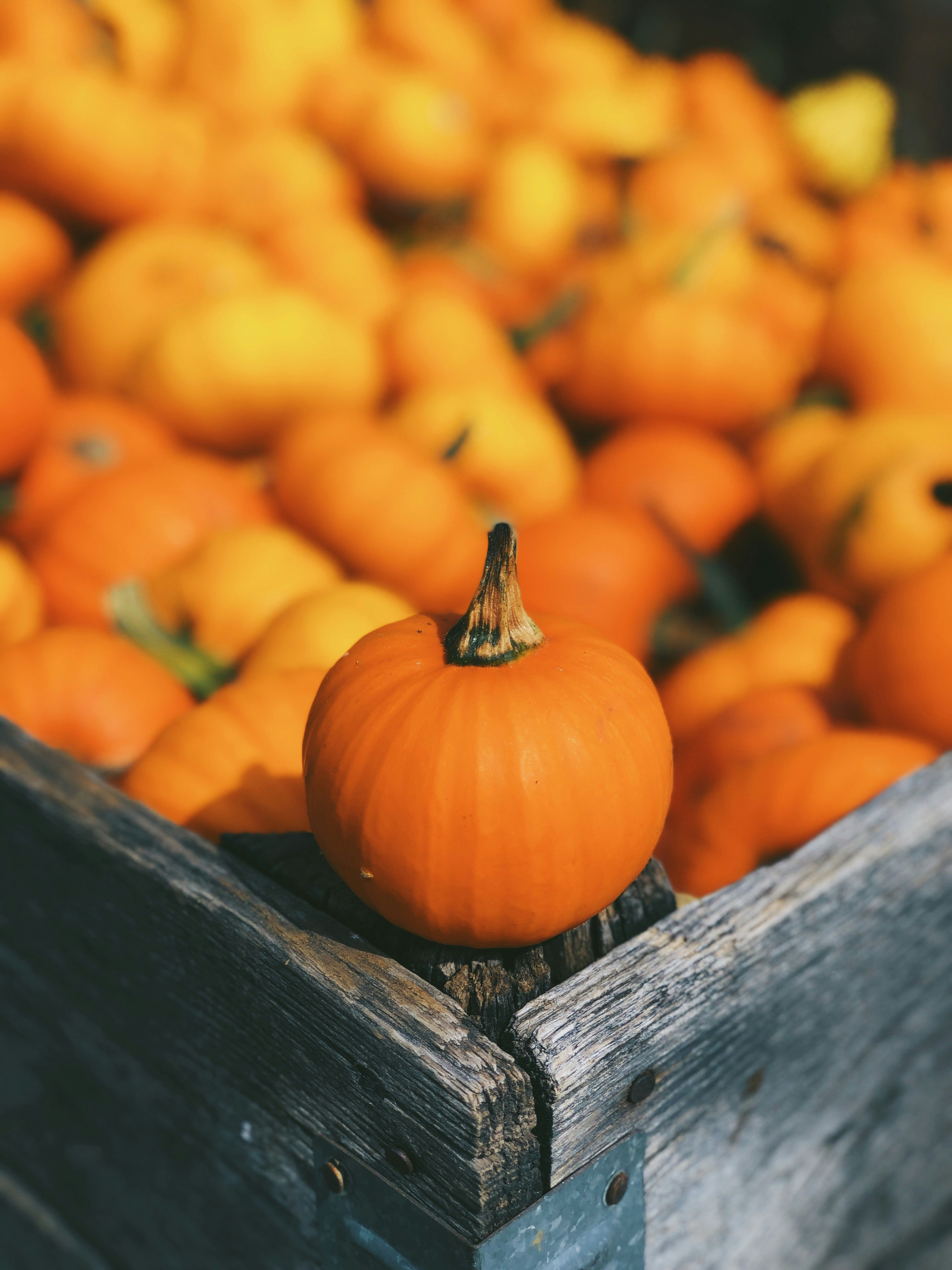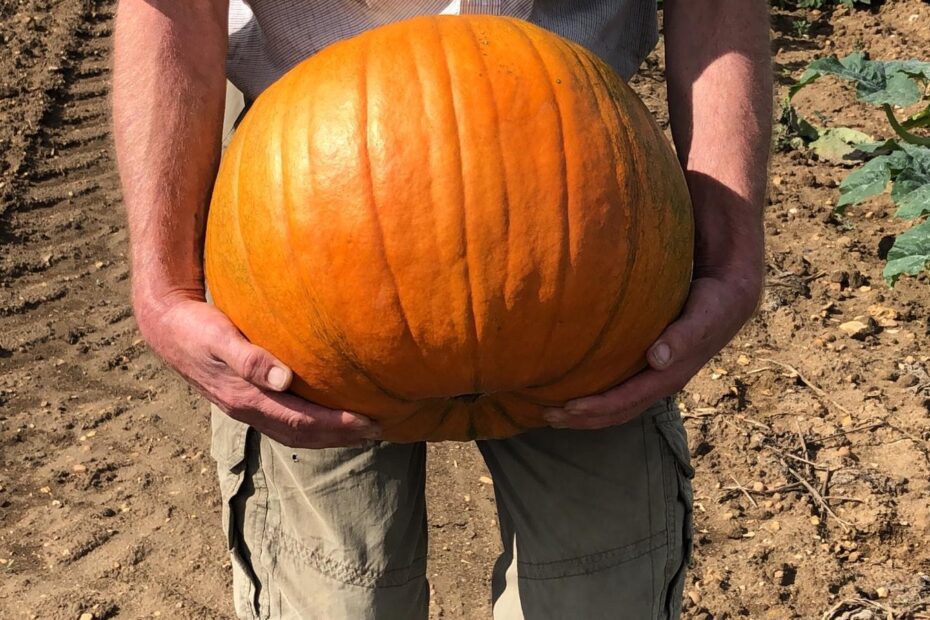In a world where gardens thrive and fantastical plants flourish, there lies a mystery that has long confounded both green thumbs and fledgling gardeners alike: can the intrepid pumpkin find solace in the arms of heavy clay soil? As we dig deep into the depths of this earthly venture, we embark on a quest to uncover the secrets beneath the sun-kissed pumpkin patches. With our trowels in hand and curiosity in our hearts, let us journey together as we explore the possibility of cultivating these beloved autumnal icons in the stubborn embrace of clay soil. Brace yourselves, for in the realm of gardening, where challenges sprout like the whimsical tendrils of a pumpkin vine, the answers we seek may lie just beneath the seemingly impenetrable surface.
Can Pumpkins Flourish in Clay Soil?
When it comes to growing pumpkins, the key is having the right soil. Clay soil, with its dense and heavy composition, can pose some challenges for pumpkin plants. However, with the right techniques and care, pumpkins can still thrive in clay soil, giving you a bountiful harvest to enjoy.
One of the main concerns with clay soil is its poor drainage. This can lead to waterlogged roots and root rot, which can severely affect the health of your pumpkin plants. To combat this, it is important to improve the soil structure by incorporating organic matter such as compost or well-rotted manure. This will help to break up the clay and improve drainage. Additionally, planting pumpkins in raised beds or hilling the soil can further improve drainage and prevent waterlogging.
| Features/Tips | Description |
|---|---|
| Choose the right pumpkin variety | Select pumpkin varieties that are known to perform well in clay soil. Look for varieties with a strong root system and good tolerance to compacted soil. |
| Provide regular watering | Clay soil tends to retain water, so it is important to water pumpkins consistently. Ensure the soil is moist but not waterlogged. |
| Add organic matter | Incorporate plenty of organic matter into the soil, such as compost or well-rotted manure, to improve its structure and drainage. |

Exploring the Feasibility of Growing Pumpkins in Clay Soil
One of the most common questions that gardeners often ask is, “Will pumpkins grow in clay soil?” Well, the answer is not a simple yes or no. Clay soil has its challenges when it comes to gardening, but with the right techniques and a little extra effort, growing pumpkins in clay soil is indeed possible. In fact, it can even yield excellent results!
One of the key considerations when growing pumpkins in clay soil is proper soil preparation. Ensure that you break up the clay to improve drainage. This can be achieved by adding organic matter such as compost, aged manure, or peat moss. These amendments help to lighten the soil, improve its structure, and increase its ability to hold nutrients and moisture. It’s also advisable to perform a soil test to determine the right nutrient levels and pH for pumpkins. By amending the soil accordingly, you create an optimal growing environment for those vibrant orange beauties.
To ensure successful pumpkin growth in clay soil, here are some essential features and tips to keep in mind:
| Features | Tips |
|---|---|
| Choose compact varieties | Consider pumpkin varieties that are known to perform well in clay soil, such as Small Sugar, Jack Be Little, or Spirit. |
| Avoid overwatering | Clay soil retains moisture for longer periods, so be cautious not to overwater your pumpkins, as this can lead to root rot. |
| Mulch | Apply a layer of organic mulch around your pumpkin plants to help regulate soil temperature, conserve moisture, and control weeds. |
By combining the right soil preparation techniques with careful attention to the needs of your pumpkin plants, you’ll be pleasantly surprised by the thriving pumpkin patch you can cultivate in clay soil. So, don’t let clay soil deter you from enjoying the delights of growing beautiful and bountiful pumpkins in your garden!
Understanding the Challenges and Benefits of Cultivating Pumpkins in Clay Soil
Have you ever wondered if pumpkins can thrive in clay soil? Well, the short answer is yes, they can! However, cultivating pumpkins in clay soil comes with its fair share of challenges and benefits. Let’s dive deep into understanding what it takes to grow these iconic autumn vegetables in such unique soil conditions.
Challenges
1. Drainage Issues: Clay soil has a compacted structure, leading to poor drainage. This can cause excess water retention, resulting in root rot and other fungal diseases. To combat this, it’s crucial to improve soil drainage by mixing in compost or organic matter.
2. Compacted Soil: Clay soil tends to become hard and compacted, making it difficult for pumpkin roots to penetrate and access essential nutrients. Aeration techniques like tilling or using raised beds can help loosen the soil and create a more favorable environment for pumpkin roots to grow.
3. Poor Root Development: Due to the dense nature of clay soil, pumpkins may struggle to develop a strong root system, resulting in stunted growth and limited nutrient uptake. Supplementing with phosphorous-rich fertilizers and regularly mulching can aid in root development and overall plant growth.
Benefits
1. Moisture Retention: One advantage of clay soil is its ability to retain moisture for more extended periods, reducing the frequency of watering. This can be beneficial, especially during hot and dry periods, as it helps maintain soil moisture levels necessary for pumpkin growth.
2. Nutrient Availability: Clay soil typically contains a higher concentration of essential nutrients needed for plant growth, such as potassium, calcium, and magnesium. While it may be challenging for roots to access these nutrients initially, once established, pumpkins can thrive off the rich mineral content.
Features and Tips
| Feature/Tips | Benefits |
|---|---|
| Regularly monitor soil moisture levels | Prevents overwatering or underwatering |
| Improve soil structure with compost or organic matter | Enhances drainage and nutrient availability |
| Provide adequate space for vines to spread | Allows for proper growth and fruit development |
Tips for Successfully Growing Pumpkins in Clay Soil
Clay soil is often considered a challenge for gardeners, but with the right techniques and tips, you can successfully grow pumpkins in clay soil. While clay soil has its drawbacks, such as poor drainage and compaction, it also offers some benefits, including its ability to retain nutrients. By understanding the unique characteristics of clay soil and employing effective strategies, you can ensure a bountiful pumpkin harvest.
Here are some helpful tips to boost your chances of success:
| Feature/Tips | Description |
|---|---|
| Amend the soil | Enrich your clay soil with organic matter, such as compost, to improve its structure and drainage. |
| Improve drainage | Consider creating raised beds or mounds to enhance drainage and prevent waterlogged roots. |
| Choose the right pumpkin variety | Opt for pumpkin cultivars that are known for their tolerance to heavy soil, such as “Claybuster” or “Iron Man”. |
Furthermore, it’s essential to practice proper watering techniques and regularly monitor moisture levels. Clay soil retains water, so overwatering can lead to root rot, while underwatering can stress the pumpkin plants. Additionally, applying a layer of organic mulch around the plants can help regulate soil temperature and retain moisture, preventing excessive drying out.
By addressing the challenges clay soil presents and implementing these helpful tips, you can cultivate a thriving pumpkin patch that defies the odds. So don’t let clay soil discourage you – embrace the challenge and get ready for a bumper pumpkin crop!
Frequently Asked Questions
Question 1:
Q: Can clay soil be transformed into a thriving pumpkin patch?
A: Absolutely! While clay soil can pose some challenges, with the right techniques and amendments, you can successfully cultivate pumpkins in clay soil. Let’s explore how!
Question 2:
Q: What are some tips to help pumpkins thrive in clay soil?
A: Tremendous results can be achieved when growing pumpkins in clay soil by following a few key steps. Firstly, ensure you provide adequate drainage by adding organic matter, such as compost, peat moss, or well-rotted manure, to break up the clay particles. Additionally, practicing raised bed or mound gardening can enhance the drainage further. Lastly, watering deeply but infrequently will encourage strong root development, preventing waterlogged conditions.
Question 3:
Q: Are there specific pumpkin varieties that are better suited for clay soil?
A: While pumpkins in general are fairly adaptable to different soil types, a few varieties have shown exceptional resilience in clay soil conditions. Varieties like ‘Cinderella,’ ‘Connecticut Field,’ and ‘Autumn Gold’ have grown successfully in clay soil for many gardeners. However, it’s always advisable to consult local garden centers or experienced pumpkin growers in your area for specific variety recommendations that thrive in clay soil. In conclusion, dear readers, as we come to the end of our exploration into the enigmatic world of pumpkin growth in clay soil, we find ourselves toeing the fine line between hope and skepticism. While clay soil can certainly present its fair share of challenges, it ultimately comes down to our steadfast determination and a sprinkle of earthly ingenuity.
As we uncovered the secrets hidden within the depths of clay soil, we witnessed the resilience of these orange wonders. Pumpkins, undeterred by the compacted nature of clay, refused to bow to its stubborn demeanor. In their quest for growth, they taught us that in the face of adversity, the true strength lies in adaptation.
Yet, let us not be fooled by whimsical expectations, for clay soil demands our unwavering commitment. The path to cultivating pumpkins in clay soil requires unwavering dedication, patience, and perhaps a touch of magic. As gardeners, we must be willing to nurture the soil, amending its texture and structure to pave the way for pumpkin prosperity. It is in this labor of love that we bestow the essence of our gardening prowess.
Remember, my fellow green-thumbed enthusiasts, that success is rarely delivered on platters of convenience. The challenges that clay soil presents only serve to enrich our love affair with gardening, reminding us of the triumph that comes from conquering the seemingly insurmountable.
So, as we bid adieu to this melodic symphony of soil and pumpkins, let us not conclude with a definitive answer, but rather a call to arms. Plant your seeds of curiosity, till your clay soil with vigor, and journey forth with the unwavering belief that pumpkins will thrive wherever passion takes root.
May the pumpkin gods bless your endeavors, and may the clay soil bear witness to the extraordinary transformation brought forth by your unwavering commitment.
- When to Put Weed and Feed on Lawn in Michigan - October 16, 2023
- When to Fertilize Potatoes Plants - October 16, 2023
- Can You Plant Clover in the Spring - October 16, 2023
Contents



